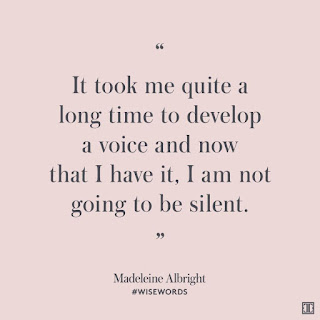Wellness in the New Year - Step Two: Ways of Letting Go of Stuff!
In Step One: Letting Go of Stuff, I asked you to complete a little homework assignment! Did you do it? If so, great. If not, let's review. Take some time - think about and write down answers to these two questions:
1. What is working in my life? Who or what is contributing to my well-being - augmenting my wellness, enhancing my sense of worth and of self, and fueling me in healthy ways?
2. Along with that, what is not working for me? Who or what is depleting me - taking away my energy, draining my resources, and diminishing my capacity for inner peace, balance, and joy?
I wanted you to list both the healthy and unhealthy items because sometimes we start beating ourselves up when we focus only on the negatives in our lives. So, congratulate yourself for the positive influences, emotions, or behaviors that you embrace! Looking over your list of 'who or what is depleting me', there could be quite a variety of people, places, emotions/attitudes/feelings, behaviors or habits, and so on. So, I am going to give you a few cognitive behavioral strategies for ways of letting go.
First, there is one general reason for why most of us have a hard time letting go. This is important.
Many years ago, when I was attending graduate school in psychology, the professor asked us to work on letting go of a behavior that was not serving us in healthy ways. I decided to work on my "worrying" - something I had done all my life! Believe me, this was no easy task! I followed a step by step cognitive- behavioral plan, and for the most part, it greatly reduced my degree of worrying. If you are working on letting go of a habit or behavior, feeling/emotion/or attitude, or obsessive thoughts - try this exercise.
1. Take a baseline count of your unhealthy behavior, emotion, etc. On an index card or your iPhone or anywhere that is handy, take a count of how many times a day you fall into this behavior. Do this for at least 3-5 days (so you get an average count). When I was taking a baseline of my worrying, it was hysterical! I was constantly running over to my index card (while I was teaching middle schoolers) and making a mark every time I started worrying! But, this gave me important information!
2. After you get a solid idea of your baseline, SET YOUR GOALS! Do this using a sort of "sliding scale". For example, for the first week, decrease your baseline by 5 each day. For my worrying exercise, I wanted to see if I could let go of worrying at least 5 times a day, each day. If I could do more, great. If I could not meet this goal, I would NOT go on to my next goal - not until this one was accomplished. This is so important because this is where we tend to give up or become discouraged! Maybe your first goal needs to be adjusted; if so do it! Do not move forward until you feel success at this level!
Once you have your baseline and you have set reasonable goals, implement any of the following strategies:
3. Put a rubber band around your wrist so that it fits pretty snugly. Every time you start to fall back into your behavior, thought, emotion, etc., snap the rubber band. Yep, snap it! Not too hard, but hard enough that you stop your unhealthy behavior, thought, and so on.
4. Once you have stopped the unhealthy pattern, immediately REPLACE it with something else - something pleasing, positive, and healthy! Have this replacement behavior or thought ready - at your fingertips! When I would start worrying, I snapped my rubber band and replaced the worry with thoughts of my favorite place, or song, or verses of a poem. This works! We can't think two opposing thoughts at the same time. If you are working on an unhealthy habit or pattern of behaving, have a healthy behavior ready to implement. I remember working with a client who had a horrible anger problem. He learned to give himself a 'time out' and go for a walk whenever he felt his anger creeping up on him. If the old unhealthy thought or behavior returns, keep repeating the process.
5. Reward yourself along the way! Choose something that you enjoy and that does not sabotage your hard work! When I was working on my worrying, if I met my goal, I rewarded myself at the end of every day (at first) with an iced coffee-mocha! Later, to make myself work even harder, I rewarded myself just at the end of each week.
In addition to these cognitive-behavioral exercises, there are other strategies or ways of letting go, especially when it comes to unhealthy people, relationships, friendships, places and things.
6. Boundary work is critical. Decide what you will accept or not accept from this person, friendship, etc. Decide what you want or don't want. I have many exercises on boundary work in Breaking Through Betrayal (Chapter 9: Boundary Work- Bracing Yourself With Supportive Structures) that will help you with this. For now, remember...
7. Communication is vital. Expressing yourself in healthy ways that clearly delineate your position and place helps greatly in letting go of toxic emotions that often accompany unhealthy relationships or friendships. Use short effective"I" statements such as the following:
I am feeling......because....... (avoid the word 'you' and focus on the problem). I need......
Example: I am feeling hurt by the lack of respect in the relationship. I need to take some time for myself.
8. Use practices or rituals for letting go that are already a part of your routine: journaling, praying, meditating, walking, etc.
When I was working on letting go of my worrying, I did not completely eradicate it! But, I did improve
upon the amount of time I was worrying. And that is a success! Even today, exactly 20 years later, when I start to worry, I remember that exercise and implement it. It still works!
Homework: Take a few days and complete your baseline and set your goals for the next several weeks.
Then, begin implementing the steps that help you to let go of stuff!!
Next time: Step Three: In Letting Go...We Give Back To Ourselves!!
1. What is working in my life? Who or what is contributing to my well-being - augmenting my wellness, enhancing my sense of worth and of self, and fueling me in healthy ways?
2. Along with that, what is not working for me? Who or what is depleting me - taking away my energy, draining my resources, and diminishing my capacity for inner peace, balance, and joy?
I wanted you to list both the healthy and unhealthy items because sometimes we start beating ourselves up when we focus only on the negatives in our lives. So, congratulate yourself for the positive influences, emotions, or behaviors that you embrace! Looking over your list of 'who or what is depleting me', there could be quite a variety of people, places, emotions/attitudes/feelings, behaviors or habits, and so on. So, I am going to give you a few cognitive behavioral strategies for ways of letting go.
First, there is one general reason for why most of us have a hard time letting go. This is important.
Letting go of anyone or anything is usually a process. It is usually not a one time event! So, it is vital to take your time, do a little at a time, and do not move forward until you have experienced success at your current level.
1. Take a baseline count of your unhealthy behavior, emotion, etc. On an index card or your iPhone or anywhere that is handy, take a count of how many times a day you fall into this behavior. Do this for at least 3-5 days (so you get an average count). When I was taking a baseline of my worrying, it was hysterical! I was constantly running over to my index card (while I was teaching middle schoolers) and making a mark every time I started worrying! But, this gave me important information!
 |
| Take Baseline and Set Goals |
2. After you get a solid idea of your baseline, SET YOUR GOALS! Do this using a sort of "sliding scale". For example, for the first week, decrease your baseline by 5 each day. For my worrying exercise, I wanted to see if I could let go of worrying at least 5 times a day, each day. If I could do more, great. If I could not meet this goal, I would NOT go on to my next goal - not until this one was accomplished. This is so important because this is where we tend to give up or become discouraged! Maybe your first goal needs to be adjusted; if so do it! Do not move forward until you feel success at this level!
Once you have your baseline and you have set reasonable goals, implement any of the following strategies:
3. Put a rubber band around your wrist so that it fits pretty snugly. Every time you start to fall back into your behavior, thought, emotion, etc., snap the rubber band. Yep, snap it! Not too hard, but hard enough that you stop your unhealthy behavior, thought, and so on.
4. Once you have stopped the unhealthy pattern, immediately REPLACE it with something else - something pleasing, positive, and healthy! Have this replacement behavior or thought ready - at your fingertips! When I would start worrying, I snapped my rubber band and replaced the worry with thoughts of my favorite place, or song, or verses of a poem. This works! We can't think two opposing thoughts at the same time. If you are working on an unhealthy habit or pattern of behaving, have a healthy behavior ready to implement. I remember working with a client who had a horrible anger problem. He learned to give himself a 'time out' and go for a walk whenever he felt his anger creeping up on him. If the old unhealthy thought or behavior returns, keep repeating the process.
 |
| Reward Yourself! |
In addition to these cognitive-behavioral exercises, there are other strategies or ways of letting go, especially when it comes to unhealthy people, relationships, friendships, places and things.
6. Boundary work is critical. Decide what you will accept or not accept from this person, friendship, etc. Decide what you want or don't want. I have many exercises on boundary work in Breaking Through Betrayal (Chapter 9: Boundary Work- Bracing Yourself With Supportive Structures) that will help you with this. For now, remember...
We teach others how to treat us. It is up to us to show others what we expect from them and of ourselves.
I am feeling......because....... (avoid the word 'you' and focus on the problem). I need......
Example: I am feeling hurt by the lack of respect in the relationship. I need to take some time for myself.
8. Use practices or rituals for letting go that are already a part of your routine: journaling, praying, meditating, walking, etc.
When I was working on letting go of my worrying, I did not completely eradicate it! But, I did improve
 |
| Letting Go of Stuff!! |
Homework: Take a few days and complete your baseline and set your goals for the next several weeks.
Then, begin implementing the steps that help you to let go of stuff!!
Next time: Step Three: In Letting Go...We Give Back To Ourselves!!
For more healing tools and resources, visit Holli Kenley, M.A., MFT
And "like" us Facebook Author Holli Kenley


Comments
Post a Comment